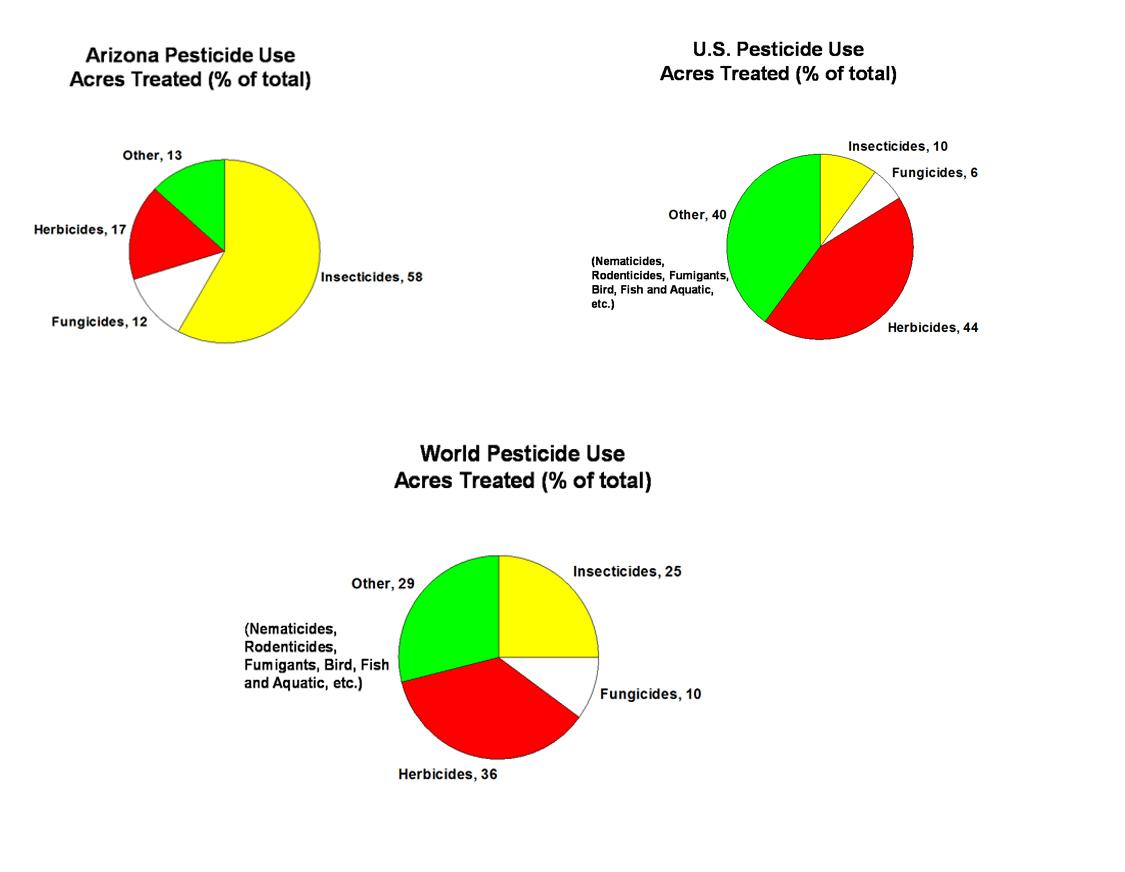 |
|
|
|

|
|||
| |
|||
There are many different types of pests that affect crops grown in Arizona. The three types of pests most often cited as the source of most problems are insects, diseases and weeds. These are the same types of pests that are cited as causing the major agricultural pest problems across the U.S. and worldwide. Graphs 1-3 illustrate, however, that the relative importance of these types of pest problems differ in Arizona from the rest of the U.S. and worldwide. In terms of pesticide use, worldwide herbicides accounted for 36% of total usage, insecticides 25%, and fungicides 10% and other 29% (nematicides, rodenticides, fumigants, bird, fish and aquatic pests). In the U.S., herbicides accounted for 44%, insecticides 10%, fungicides 6%, and other 40% of pesticide use. In Arizona, however, insecticides accounted for 58%, herbicides 17% and fungicides 12%. This is only an indirect measure of the relative importance of these three areas of pest management and may be heavily influenced by the amount of pesticides used. For instance, it is common to spray for insects five or more times per season while it is uncommon to spray for weeds more than twice. None the less, these graphs illustrate that weeds are the predominant pest problem in agricultural areas across the U.S. and worldwide.
To contact Barry Tickes go to: btickes@ag.arizona.edu. |
|||
| Back | |||
For questions or comments on any of the topics please contact Marco Pena at the Yuma Agricultural Center. |
|||
| Home | Cotton
| Veggies | Forages
| Grains | Citrus
| Crop x Crop Insects | Diseases| Weeds | Pesticides | Economics | News | Weather | Research | Photos | Contacts | General Info. Copyright © 2001 University of Arizona, College of Agriculture and Life Sciences Webmaster: Al Fournier (acis@ag.arizona.edu) |
|||
